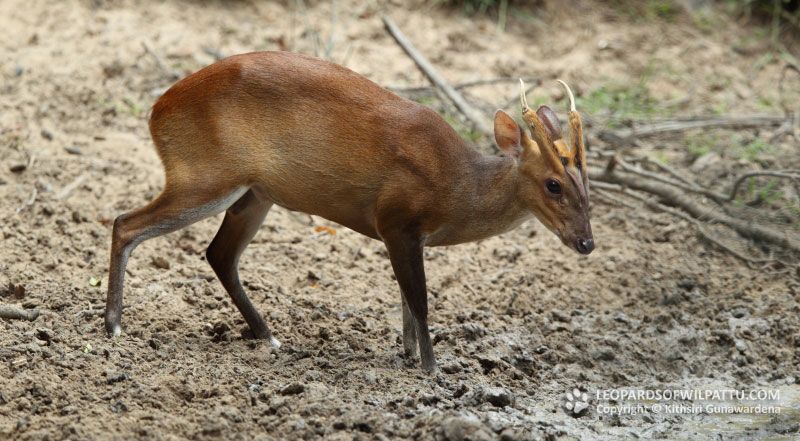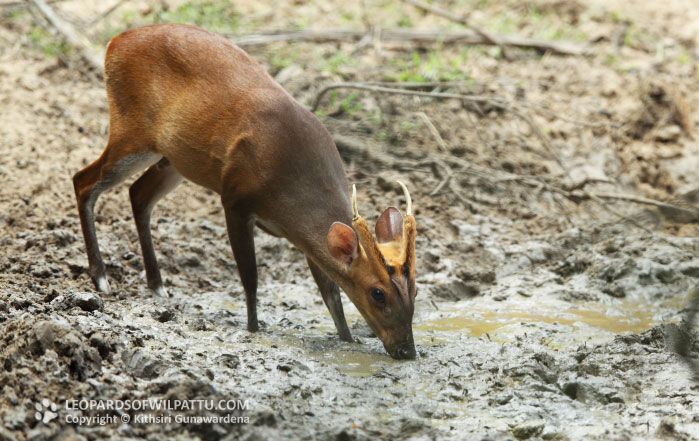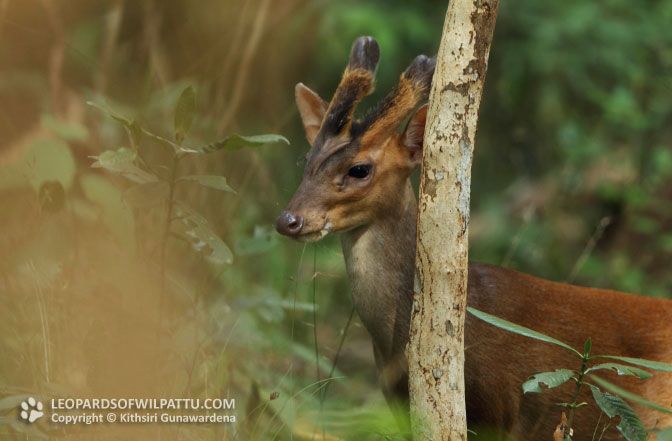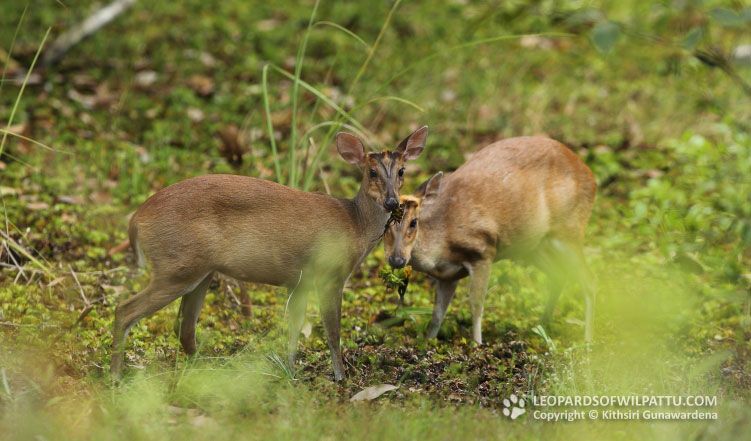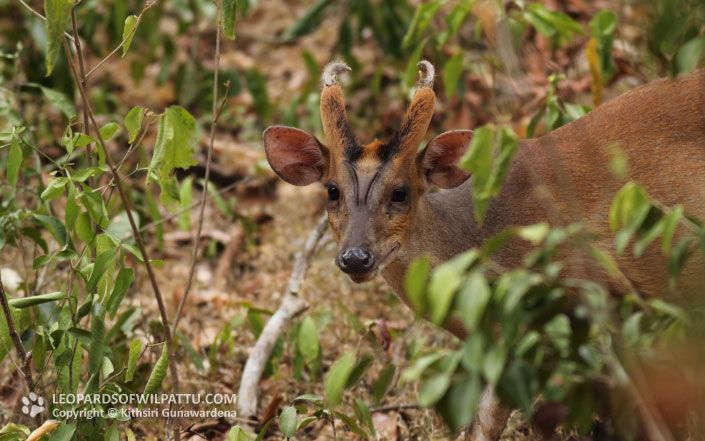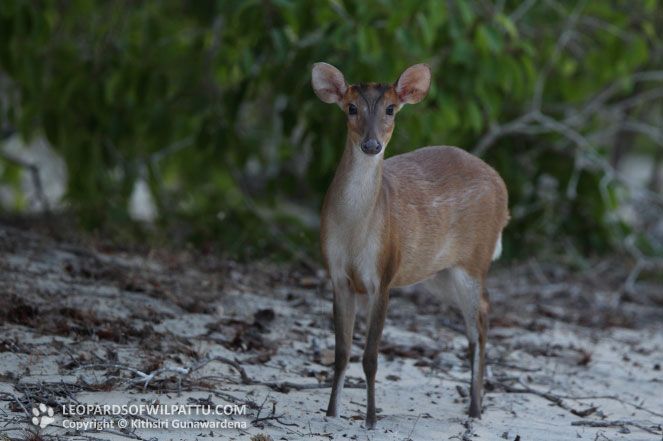
Mammals ‹‹ Go Back
Ten subspecies of this small deer have been recognized in the world. They are found in India, Pakistan, Sri Lanka, Peninsular Malaysia, Cambodia, Laos, Thailand, Myanmar, Nepal, Bhutan, Vietnam and South China. The subspecies that is found in Sri Lanka M. m malabaricus is also found in South India. The conservation status of this species is regarded as Near Threatened (National Red List 2012).
This is a species strictly protected under the Fauna and Flora Protection Ordinance as amended by Act No. 22 of 2009.
Even though this small deer is found throughout the island from the highest mountain forests to the driest scrub forests close to the sea, it is more frequently observed at Wilpattu National Park than in any other park in the country. It is a very shy animal and will generally dart into the forest at the first sign of danger. During the dry season (July – September) many of them will often visit the waterholes during the midday heat while in the wet season the sightings become less common. The Barking Deer is found throughout the park. Its call is a loud bark, which is made intermittently if a leopard is sighted.
Other than in Wilpattu I have observed this deer at Yala and Wasgomuwa National Parks, many locations in the Knuckles Forest Reserve, Galway’s Forest National Park in Nuwara Eliya, Sinharaja Forest Reserve, Peak Wilderness and the Dolosbage Forests.
The upper canine teeth of the male are developed in to extremely sharp tushes which project slightly beyond its lips. A villager that lives by the forest in the Knuckles Forest Reserve once told me that the male uses these tushes to chisel away the bark of trees; it then licks the sap that flows.
Even though this species is known to feed on fruits, shoots, grass etc. I once observed a female and a subadult of this species feeding on Salvinia (Pasi) at Kumbuk Wila.
This animal is not found in herds. Most of my sightings of this species at Wilpattu have been of lone animals or a pair with a few sightings of a mother and young.

